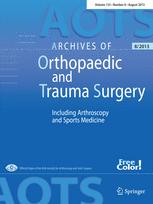
Shoulder & Elbow
Immobilization and passive motion yield similar tendon healing after rotator cuff repair
Arch Orthop Trauma Surg. 2014 Sep;134(9):1279-85.Data from 3 randomized controlled trials (265 patients) investigating early passive motion versus immobilization after arthroscopic rotator cuff repair was pooled in this meta-analysis in order to determine which rehabilitation protocol led to superior postoperative tendon healing. The pooled analysis revealed there were no significant differences between early passive motion and postoperative immobilization with respect to tendon healing or clinical outcomes, but early passive motion was associated with increased external rotation at 6 months, however, this improvement was not maintained at 1 year.
Unlock the full article
Get unlimited access to OrthoEvidence with a free trial
Start TrialCritical appraisals of the latest, high-impact randomized controlled trials and systematic reviews in orthopaedics
Access to OrthoEvidence podcast content, including collaborations with the Journal of Bone and Joint Surgery, interviews with internationally recognized surgeons, and roundtable discussions on orthopaedic news and topics
Subscription to The Pulse, a twice-weekly evidence-based newsletter designed to help you make better clinical decisions
Exclusive access to original content articles, including in-house systematic reviews, and articles on health research methods and hot orthopaedic topics
Or continue reading this full article
Register Now

Subscribe to "The Pulse"
Evidence-Based Orthopaedics direct to your inbox.




































